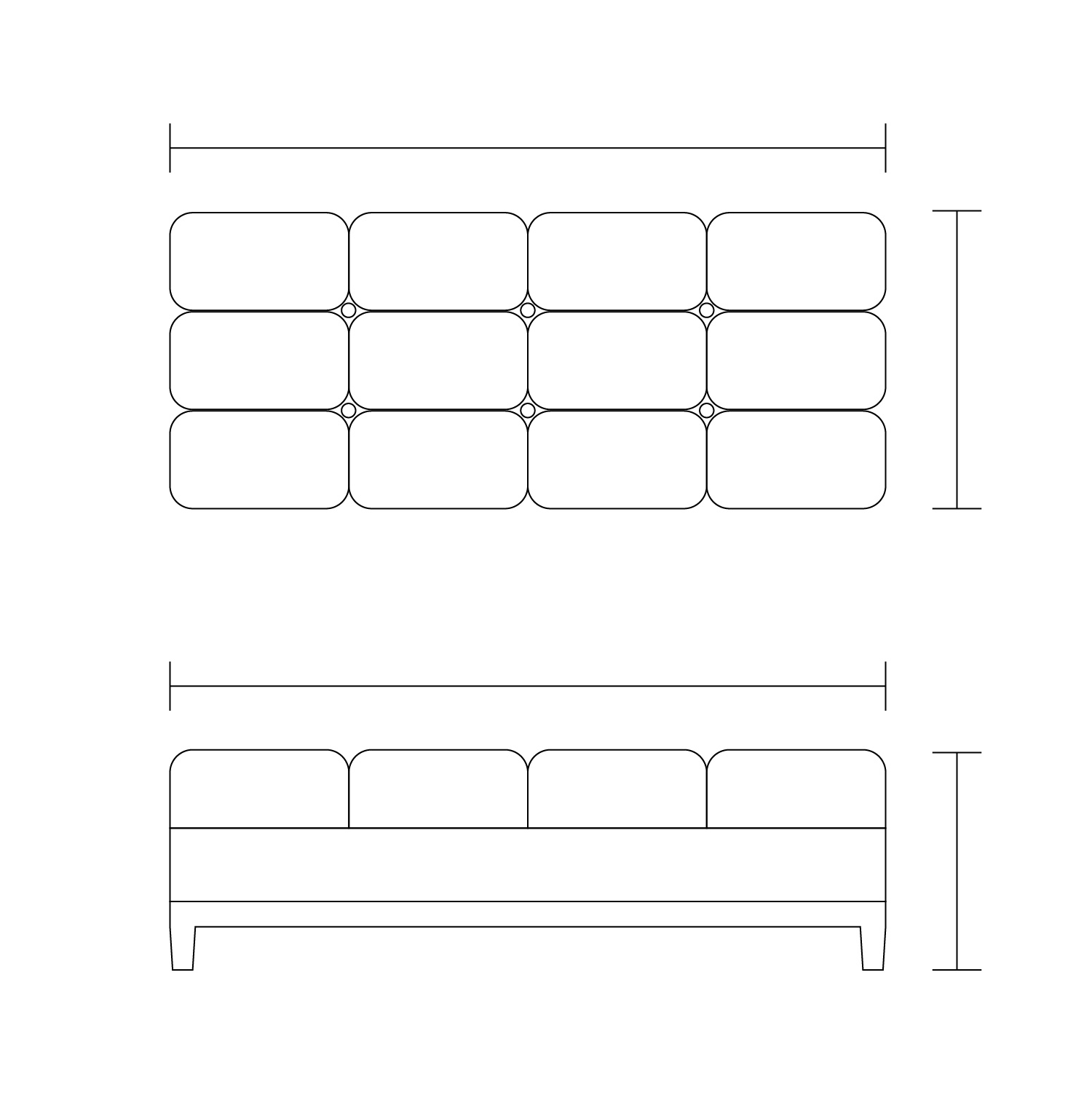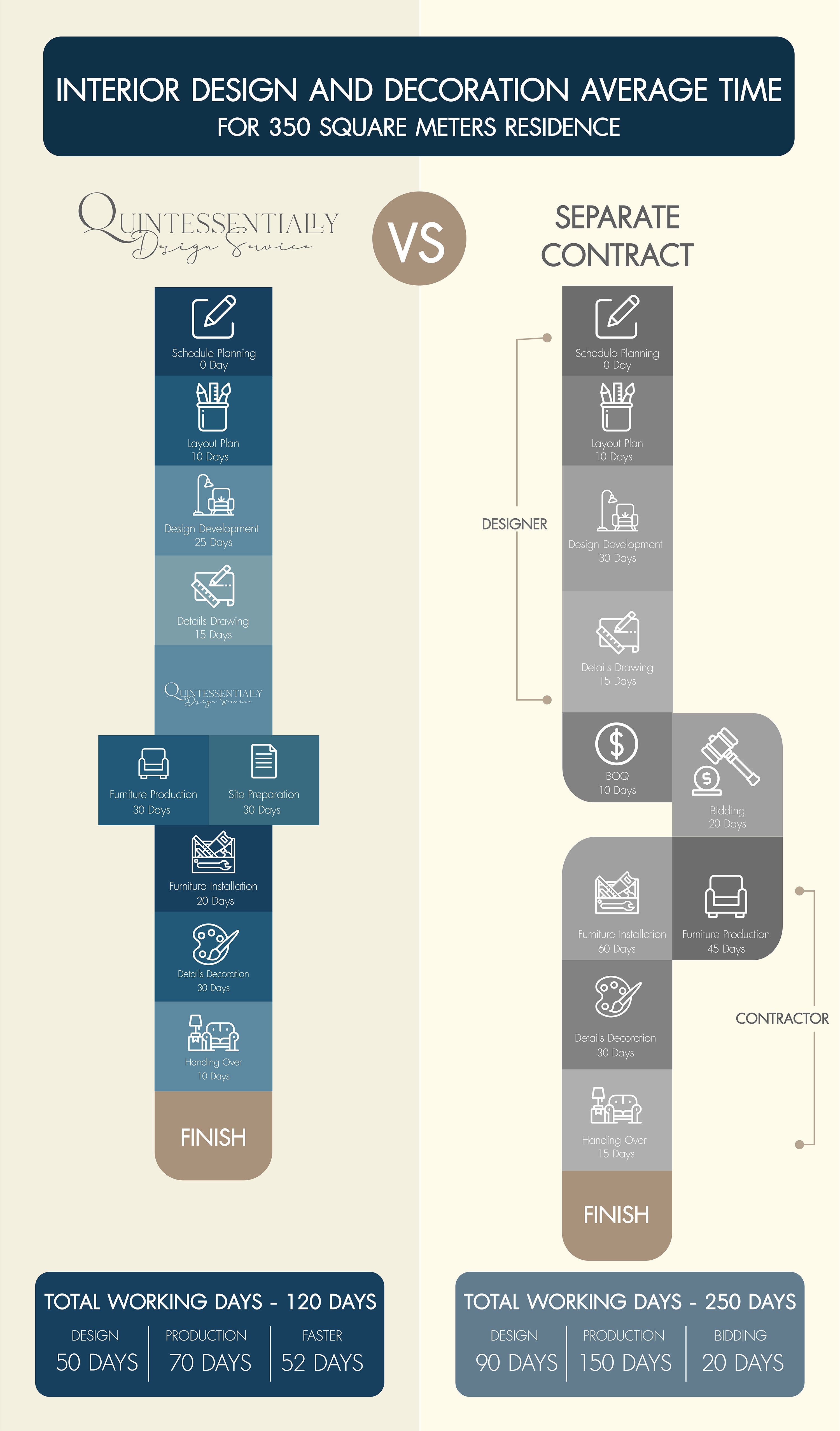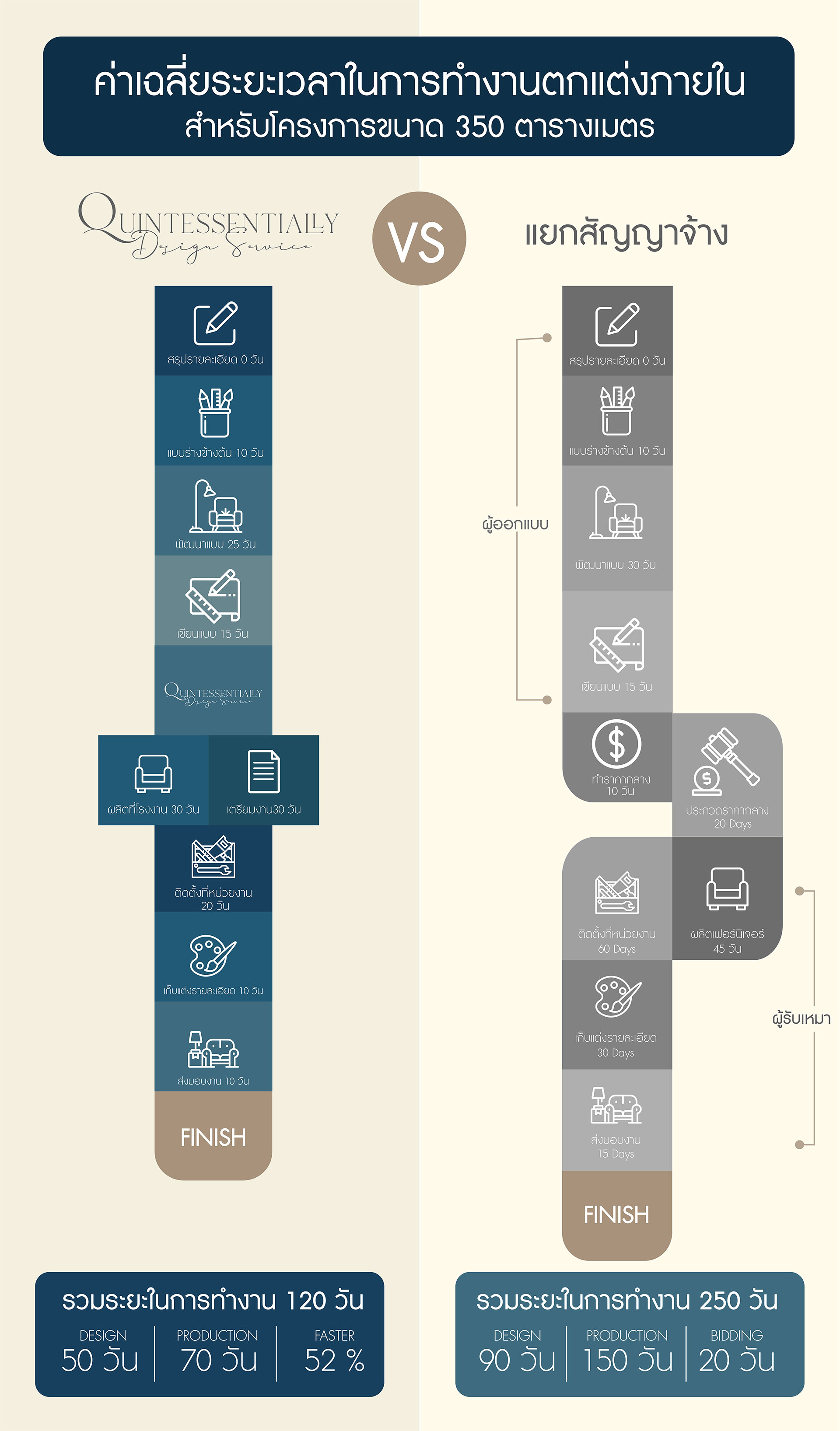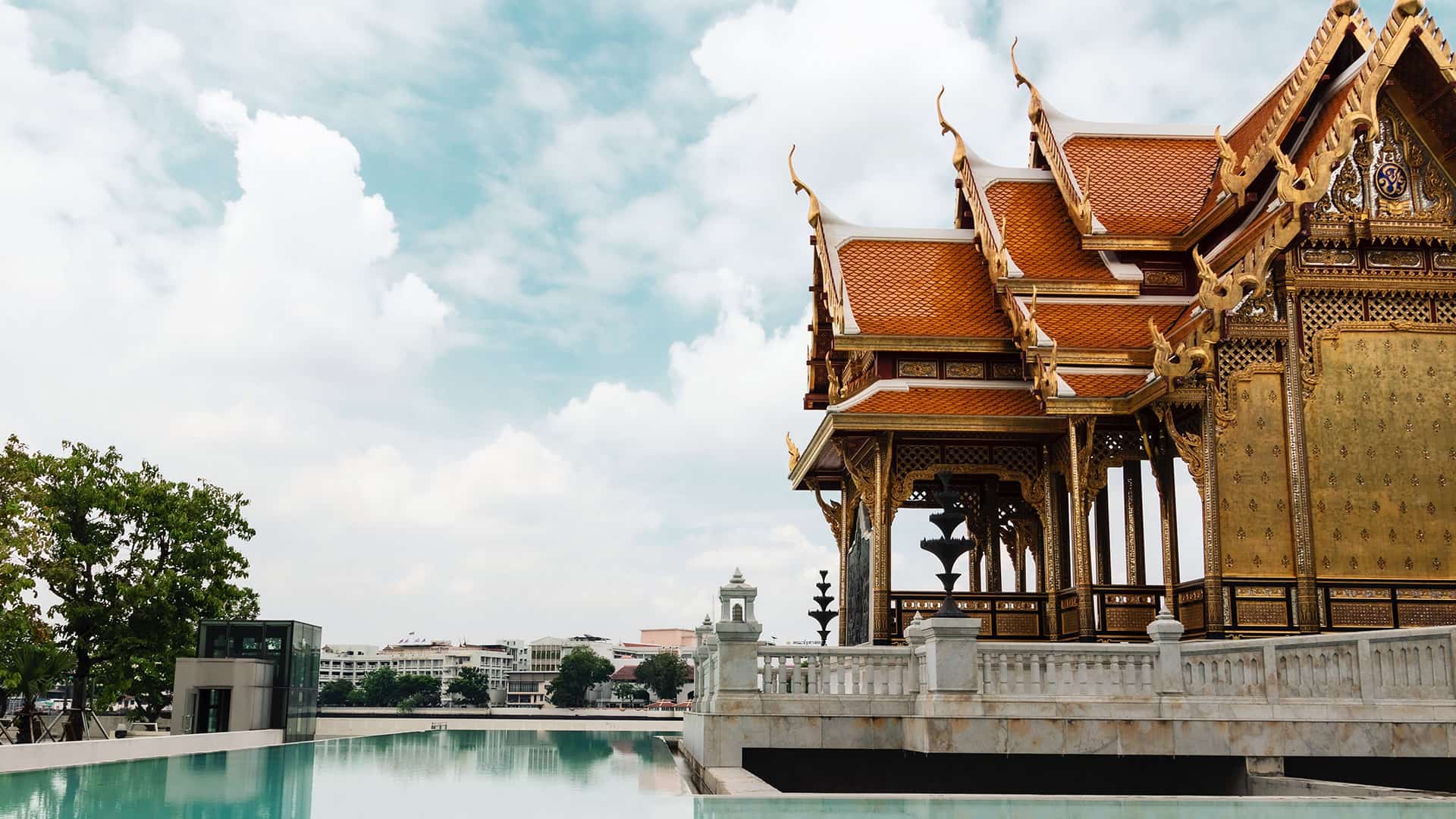
MARVEL ARCHITECTURES
OF THAILAND
| EN | TH |
Most people are familiar with famous architectural structures like the Eiffel Tower in Paris or the Colosseum in Rome. While you travel far and wide to look at these places, you should also consider the architectural marvels that are worth visiting in Thailand. There are 10 priceless structures in the country that are particularly amazing and worth the visit.
Bang-pa-in Palace
(พระราชวังบางปะอิน)
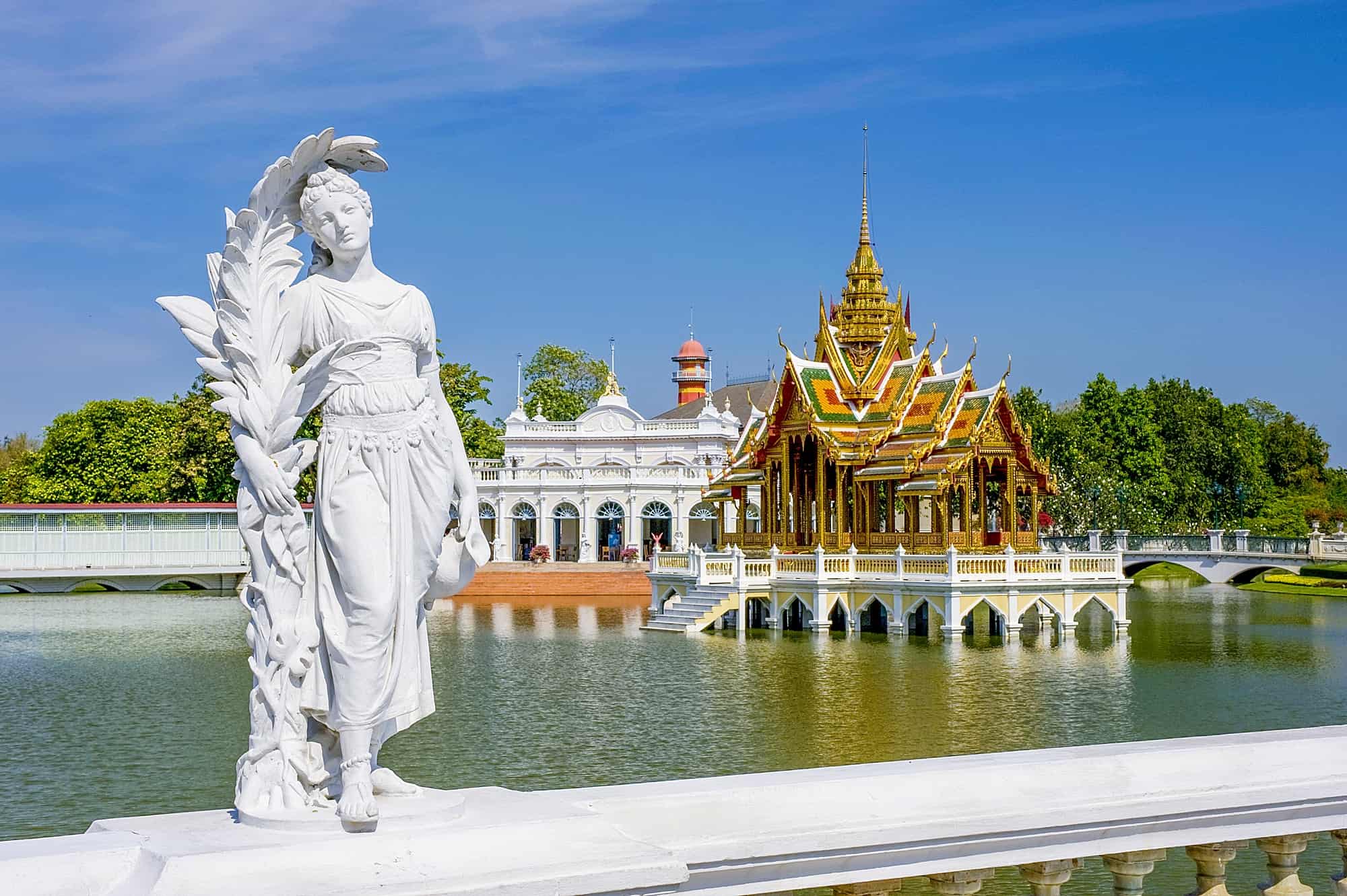
Credit : tourismthailand .org
Location: Phra Nakhon Si Ayutthaya Province, Thailand
The Bang-pa-in Summer Palace has a very interesting history. A royal barge capsized around Ban Len Island during the Ayutthaya Era. King Eka Tossarot had been on board and this was where he met the lady who was the mother of the future King Prasart Thong. During his reign, the King commissioned a temple in his mother’s hometown and the Aisawan Thiphya-Asana Royal Pavilion with it. This was how the beautiful summer palace had its beginning.
During the reign of King Rama V, major renovation work was undertaken for this palace. The deserted palace was transformed into a royal court with added pavilions and buildings. This palace is now a collection of Thai architectural masterpieces along with those inspired by other countries. It includes the Chinese style palace, the Thai style royal pavilion, a western-style timber palace, etc.
Wat Niwet Thammaprawat
(วัดนิเวศน์ธรรมประวัติราชวรวิหาร)
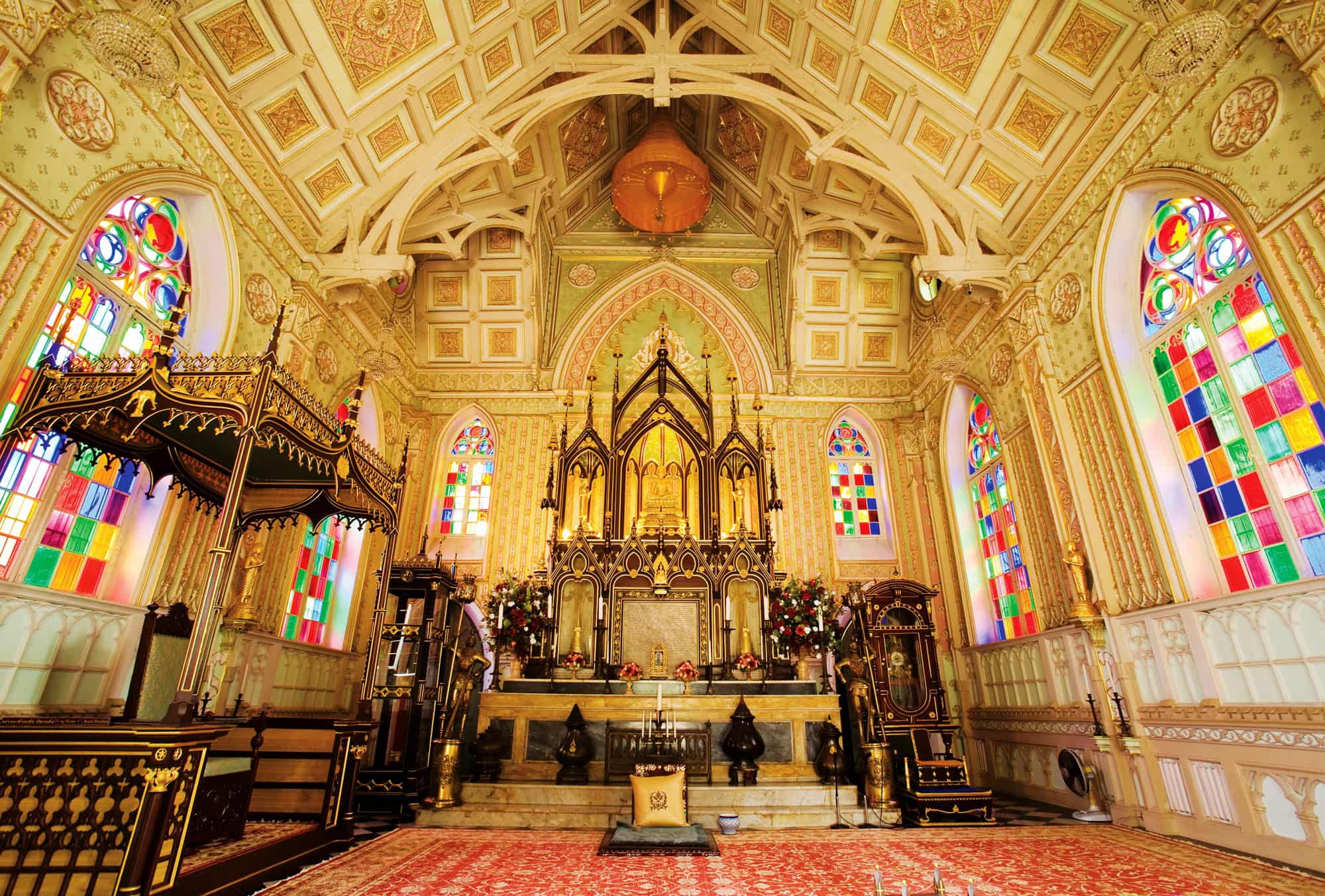
Credit : tourismthailand .org
Location: Phra Nakhon Si Ayutthaya Province, Thailand
Wat Niwet Thammaprawat is a gothic style Buddhist temple that was built in 1876. King Rama V was the first Thai King to visit Europe and commissioned this building during his reign. It lies on a small island and served as a royal temple when the royal family visited the Bang-pa-in Palace in the summer. Unlike other monastery buildings, the exterior of this temple resembles a church.
The image of Buddha in the interior is particularly attractive and the marble floor, beautiful decor and stained glass windows all make it a worthy site to visit. The same compound is also home to other European style buildings that are now used as offices, libraries, monk residences, etc. A cable car is used for connecting this island temple to the mainland.
Wat Pa Phu Kon
(วัดป่าภูก้อน)
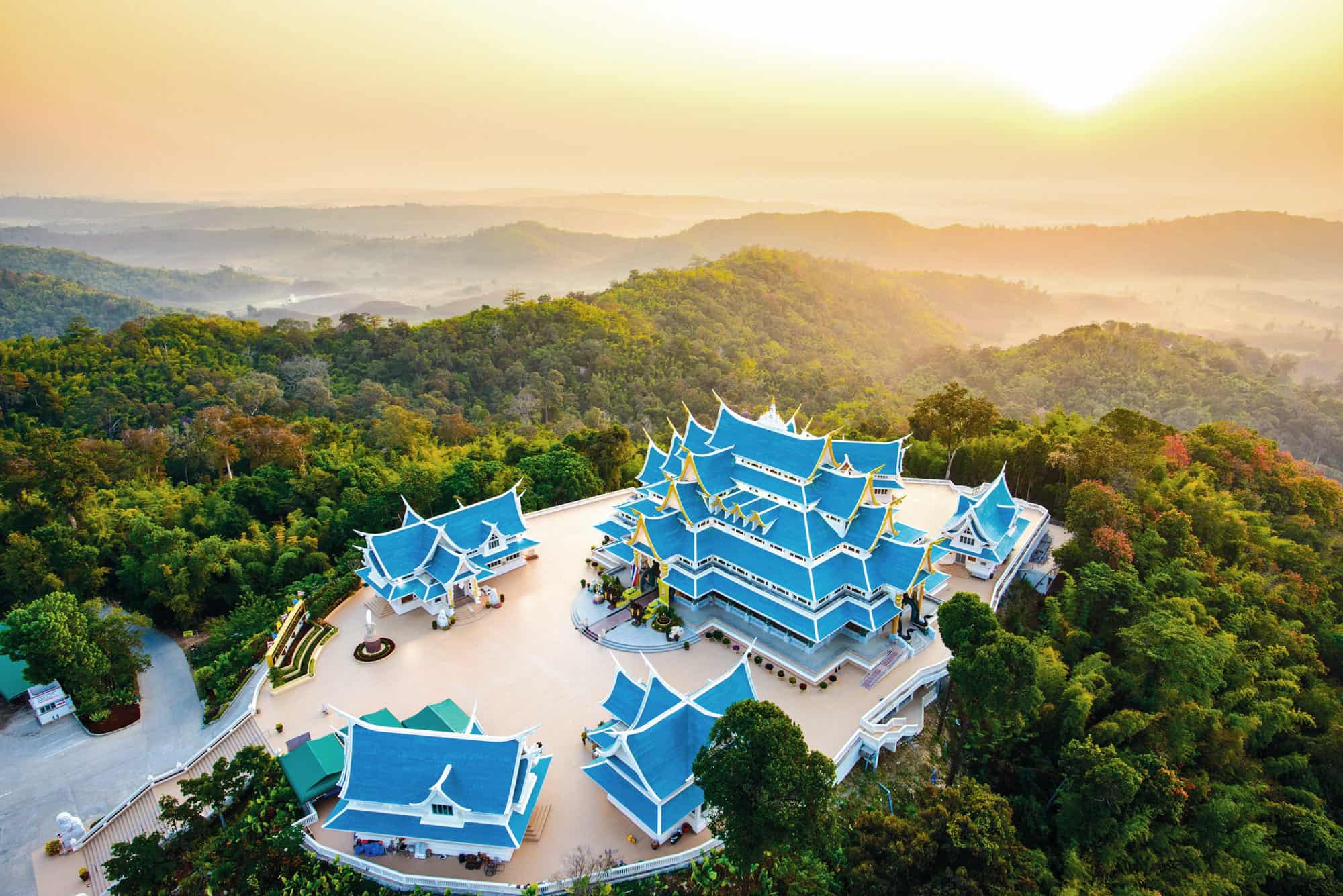
Credit : tourismthailand .org
Location: Udon Thani Province, Thailand
Wat Pa Phu Kon is another beautiful Buddhist temple in Thailand that should be visited. It is a pilgrimage spot for Buddhists and is located in the area of the Na Yung-Nam Som National Forest Reserve. This temple is a peaceful place that is perfect for monks to meditate and work on mental development. Fine Thai architectural design is reflected in the buildings on the hilltop, the image hall of the temple and the surrounding pavilions.
A white marble Buddha sits in the image hall that has three entrances. The image is 20 metres long and features a reclining Buddha in the posture of attaining Nibbana. There are spectacularly decorative Buddhist teachings inside the image hall and the panels in the walls depict the life and birth stories of Lord Buddha. A bell-shaped chedi called Ong Phra Pathom Rattana Buraphachan Maha Chedi is covered with a golden mosaic and is found atop a hill. The Buddha’s relics are enshrined in the topmost orb of this Chedi.
It cost around 320 million Baht to construct this temple complex and the funds were donated by a Thai donor who wanted to honour King Bhumibol Adulyadej. The Great Wihan (วิหาร) is the largest component of this temple and the entire complex is centred around it.
Wat Rong Khun
(วัดร่องขุ่น)
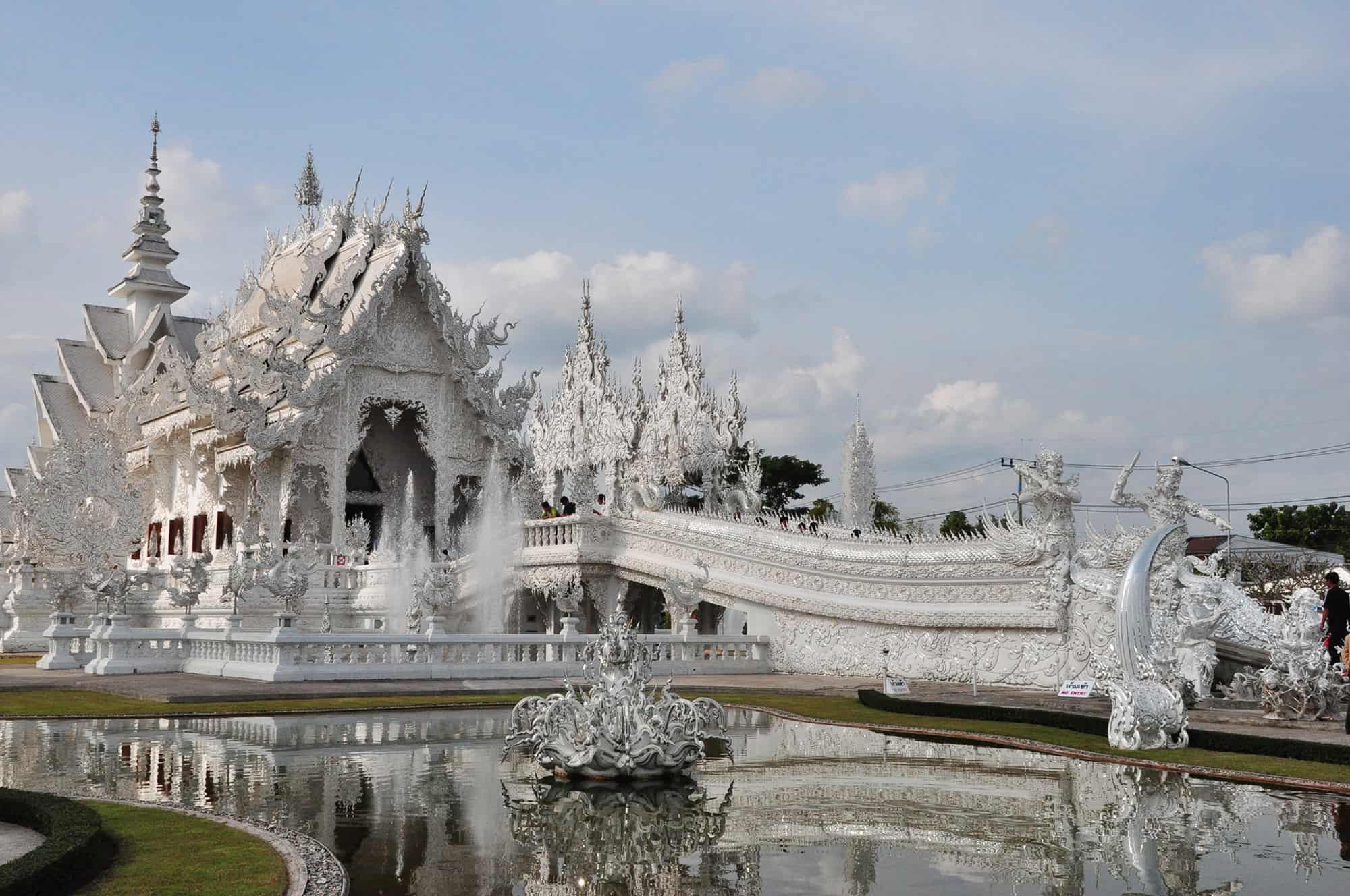
Credit : I Do Nothing But Love on Unsplash
Location: Chiang Rai Province, Thailand (Wat Rong Khun / White Temple, Chiang Rai)
A famous Thai visual artist Chalermchai Kositpitat designed the Wat Rong Khun in modern Thai architectural style. He constructed and renovated the structure with his own funds and to date, more than 1,000 million THB has been spent on the project. Wat Rong Khun is commonly known as The White Temple by most people around the world. This bizarrely beautiful structure is one of the most well-known pieces of architecture in the country and lies just outside Chiang Rai. The completely white temple stands out because of the glass used in the plaster that makes it sparkle under sunlight.
The white color was chosen to symbolize the purity of Lord Buddha and the glass is a symbol of his wisdom and teachings. This temple is still considered unfinished to this date. The construction of other structures like a hall for Buddhist relics and a meditation hall is still to be made. The temple was badly damaged by an earthquake in 2014 but restoration and expansion work is still being done.
The main building at the temple is reached through the bridge of the cycle of rebirth. The outreaching hands in front of this bridge are a symbol of unrestrained desire. Once you cross the bridge, you reach the gate of heaven which is guarded by two structures representing Rahu and Death. The Ubosot or main building has a three-tiered roof that is classic to Thai architecture and also displays Naga serpents. The restrooms building is an ornately decorated part of the temple that is golden and stands out from the white structure. Since the temple is open for visits throughout the year, everyone should try to take out time to explore this architectural marvel.
Phayathai Palace
(วังพญาไท)
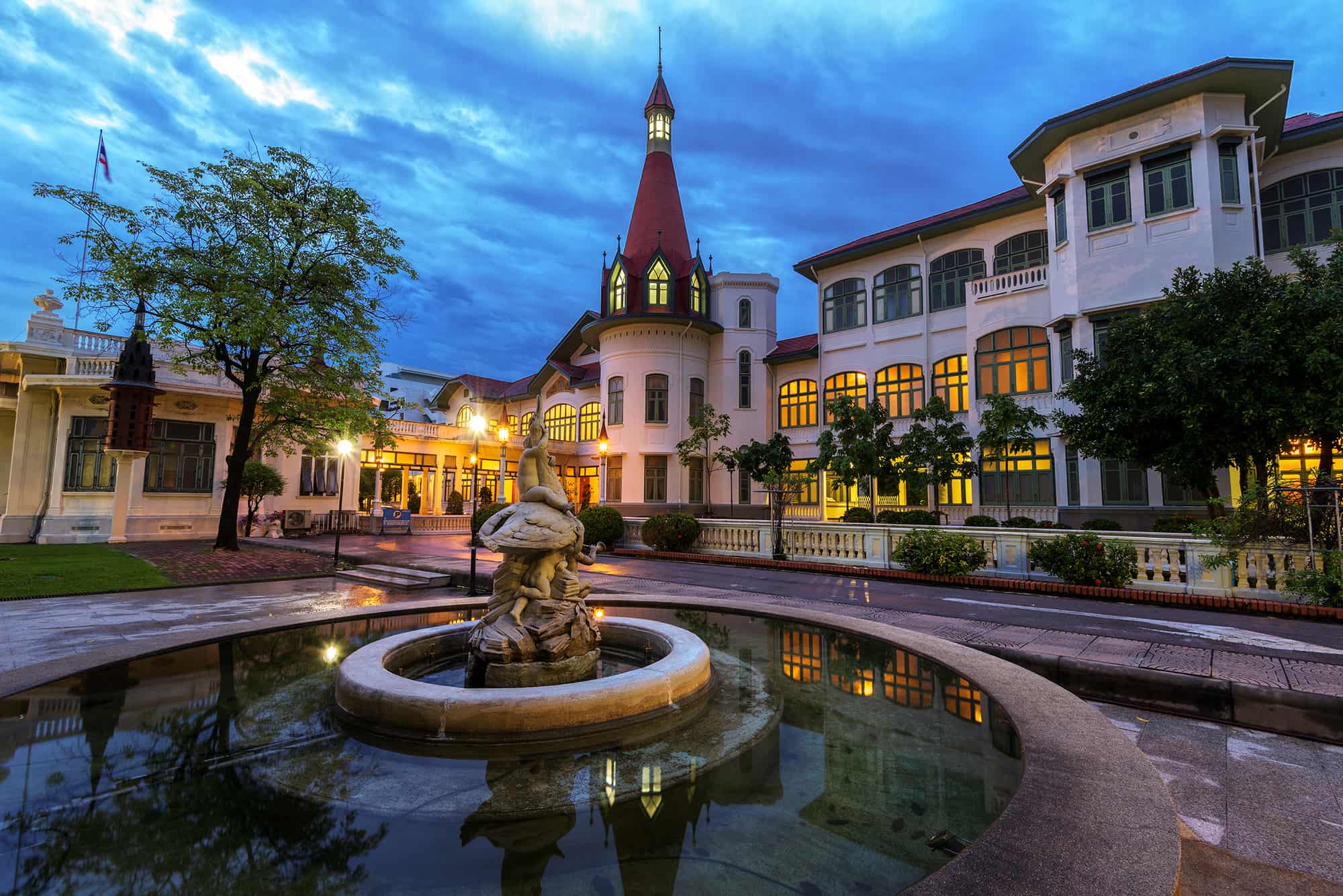
Credit : Berry on en.wikipedia
Location: Ratchawithi Road, Bangkok Metropolis
The Phayathai Palace was built as a royal residence in 1910. It is one of Thailand’s hidden treasures and is seldom visited despite its beauty. King Rama V built this palace as a royal retreat along the banks of the Samsen canal. The area surrounding it was used for farming and agricultural experiments. Queen Saovabha used this palace as her residence until her death in 1919 but the King could not spend much time there since he passed away in October 1910.
Only one of the original European style palace buildings remains today, the Phra Thinang Thewarat Sapharom. The french doors and the roof with wood carvings make it a pleasure to look at. This building was used as a ceremonial hall and theatre and other than this building, the rest of the original structure was torn down by King Rama VI. New structures were built to create a new residence.
The European style round turret in the Phiman Chakri Throne Hall has a red conical roof and is one of the most noticeable features. The interiors of the palace are very European and you can see the beautiful Italian style frescos on the ceiling there. The Srisutanivat building was meant for the female members of the royal family. The palace is currently a museum but was previously used as a hotel, radio station and even a clinic.
The Ananta Samakhom Throne Hall
(พระที่นั่งอนันตสมาคม)
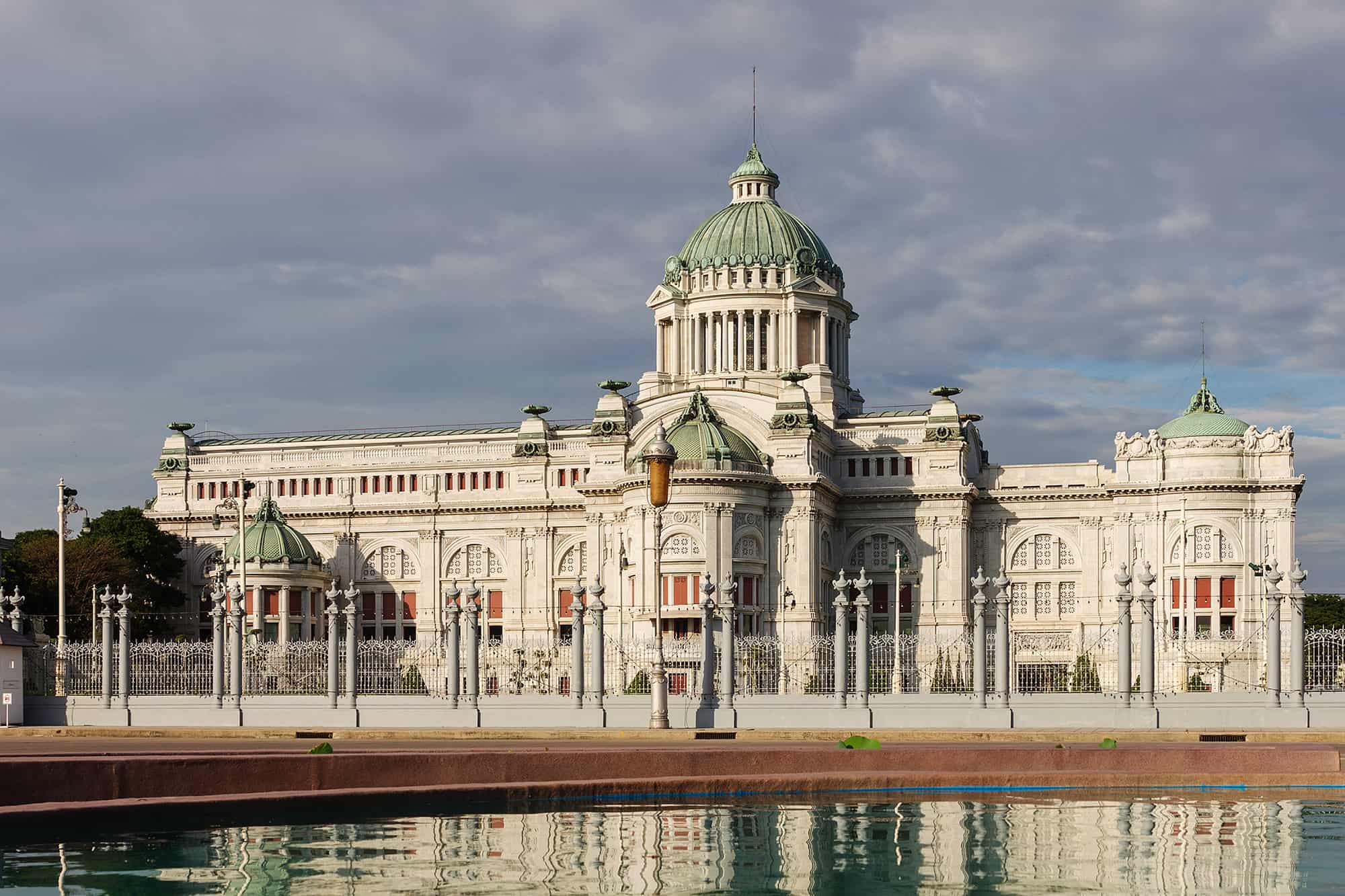
Credit : Supanut Arunoprayote on en.wikipedia
Location: Bangkok Metropolis
Ananta Samakhom Throne Hall is an impressive building that was built in 1915 by King Chulalongkorn. It was meant to be a reception hall for Dusit Palace. The construction was started in 1906 but could only be completed in 1915 during the reign of King Rama VI. It is an Italian Renaissance style structure that bears a close resemblance to the Sistine Chapel in Italy. Built from Italian white marble it is a two-storey building with a large dome in the centre that has six smaller domes that surround it.
Mario Tamagno and Annibale Rigotti were the two Italian architects hired for this job. If you pay a visit, you will be struck by the beautiful exterior and interior of this building. The murals on the large dome tell a rich history of the current dynasty and The Royal Throne sits under this central dome. At one point, the Throne Hall was the headquarters for the People’s Party and then the Parliament building. Now, it is a museum and is also used for ceremonial state functions.
Church of the Blessed Sacrament
(วัดศีลมหาสนิท)
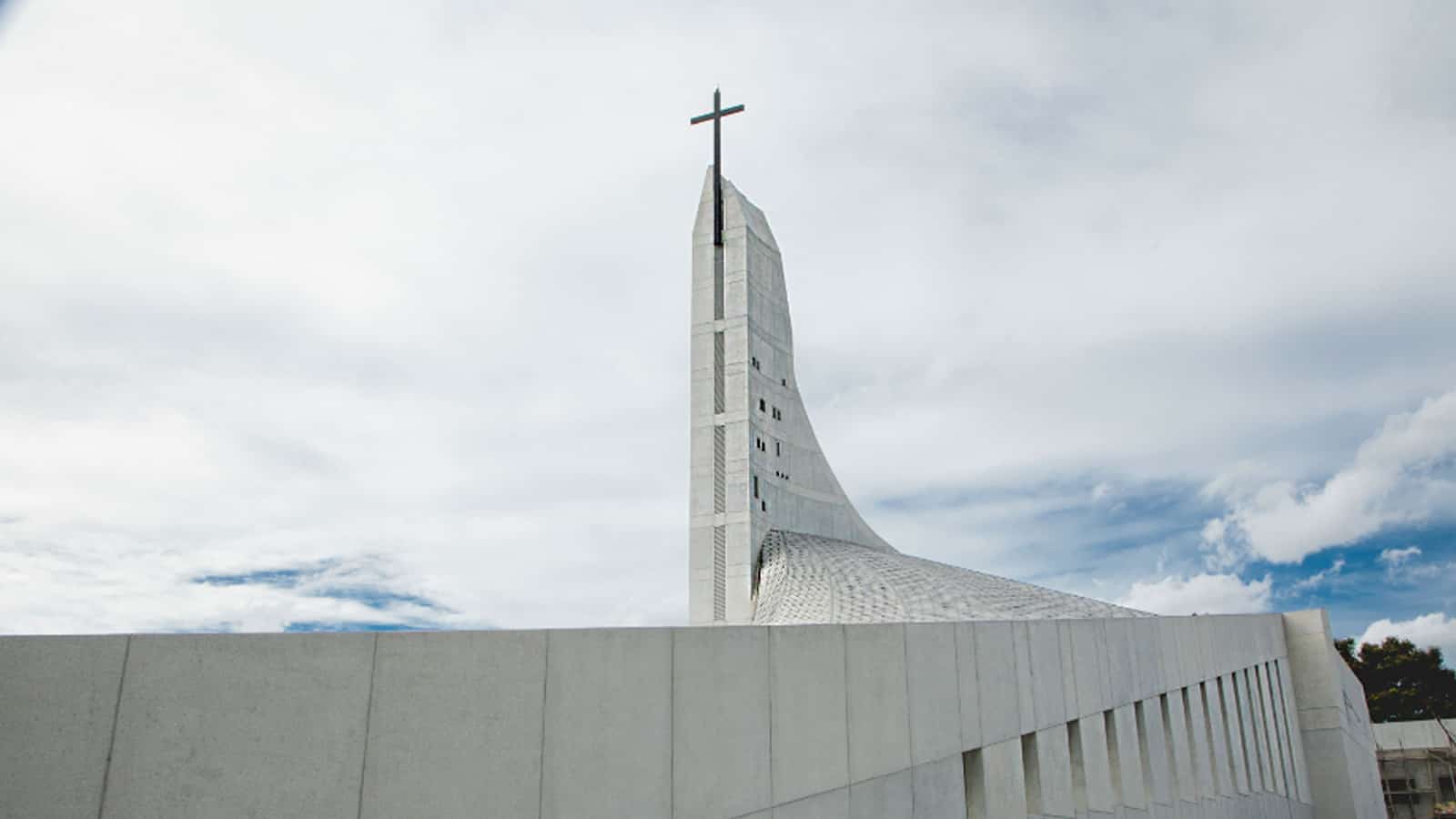
Credit : jhsbkk .com
Location: Taling Chan, Bangkok Metropolis
Another iconic structure in Bangkok is The Church of Blessed Sacrament. Unlike most churches, the modern architecture of the building could easily make you think it is a contemporary art gallery. The architect for this church was Manode Sookchai and he drew inspiration for its shape from sacramental bread. The curved roof is made of glass, raw concrete and metal. The cross tower is 50 meters tall and can easily be spotted from afar. A sloped pathway leads to the main entrance.
State Tower
(สเตท ทาวเวอร์)
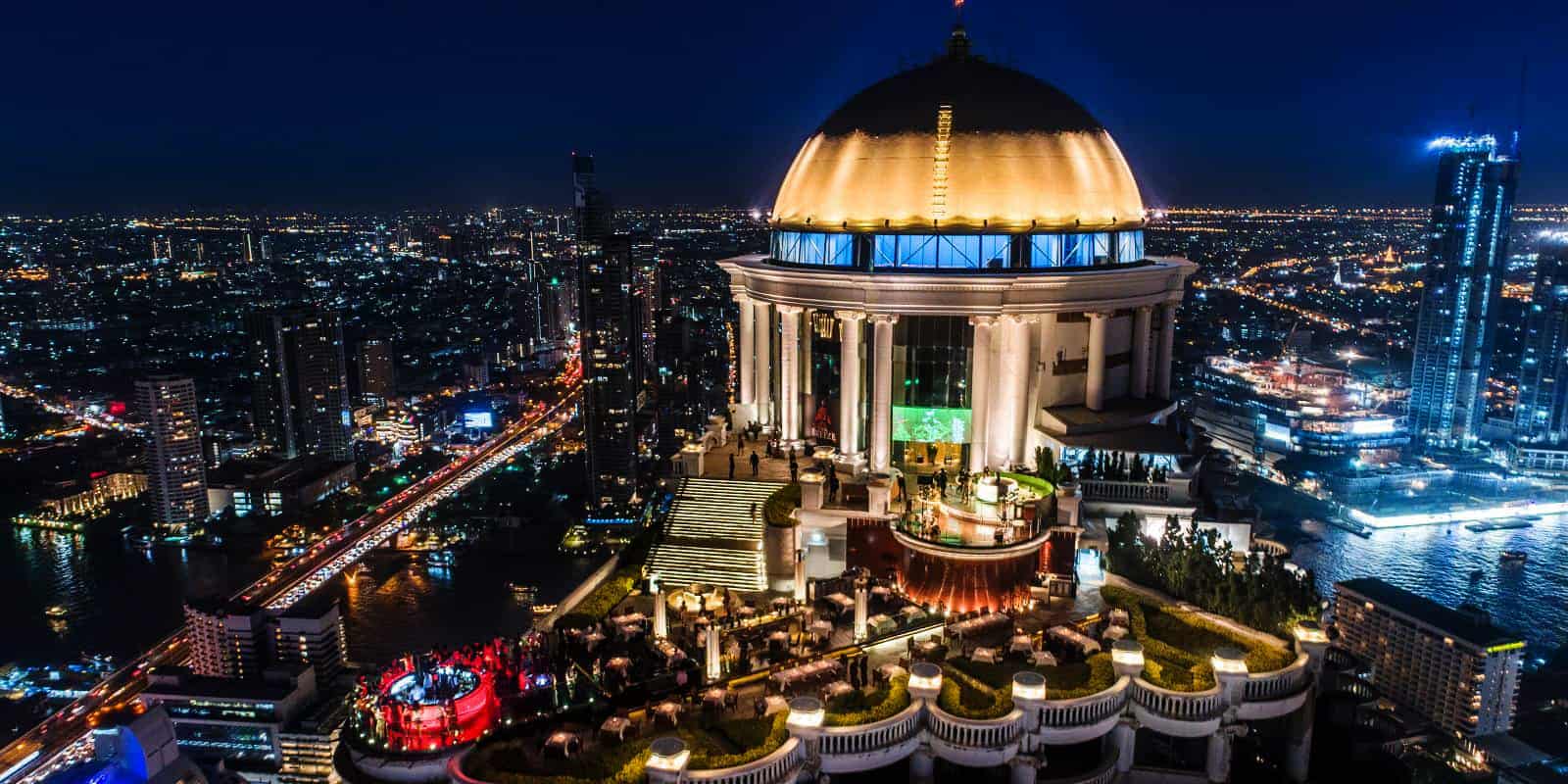
Credit : lebua .com
Location: Bangkok Metropolis
State Tower is one of the most famous skyscrapers of Bangkok, Thailand. It is located in the Bang Rak district, on Silom Road. Constructed in 2001, it has a floor area of 297,290 sq.m. and 68 floors. This building was the 139th tallest building in the world and third tallest in the country as of 2011. The tall golden rooftop dome is a characteristic feature of this massive building. It has neo-classical balconies and was originally called Silom Precious Tower. It was later renamed to Royal Charoen Krung Tower and then to State Tower as it is now known. There are condominiums, offices, serviced apartments, two luxury hotels and other retail units in the building. Lebua Hotel’s “Sirocco” rooftop restaurant, on the 63rd floor, is the highest open-air restaurant in the world. As you have a delicious meal here, you can enjoy one of the best panoramic views of Bangkok.
Promthep Clock Tower
(หอนาฬิกาพรหมเทพ)
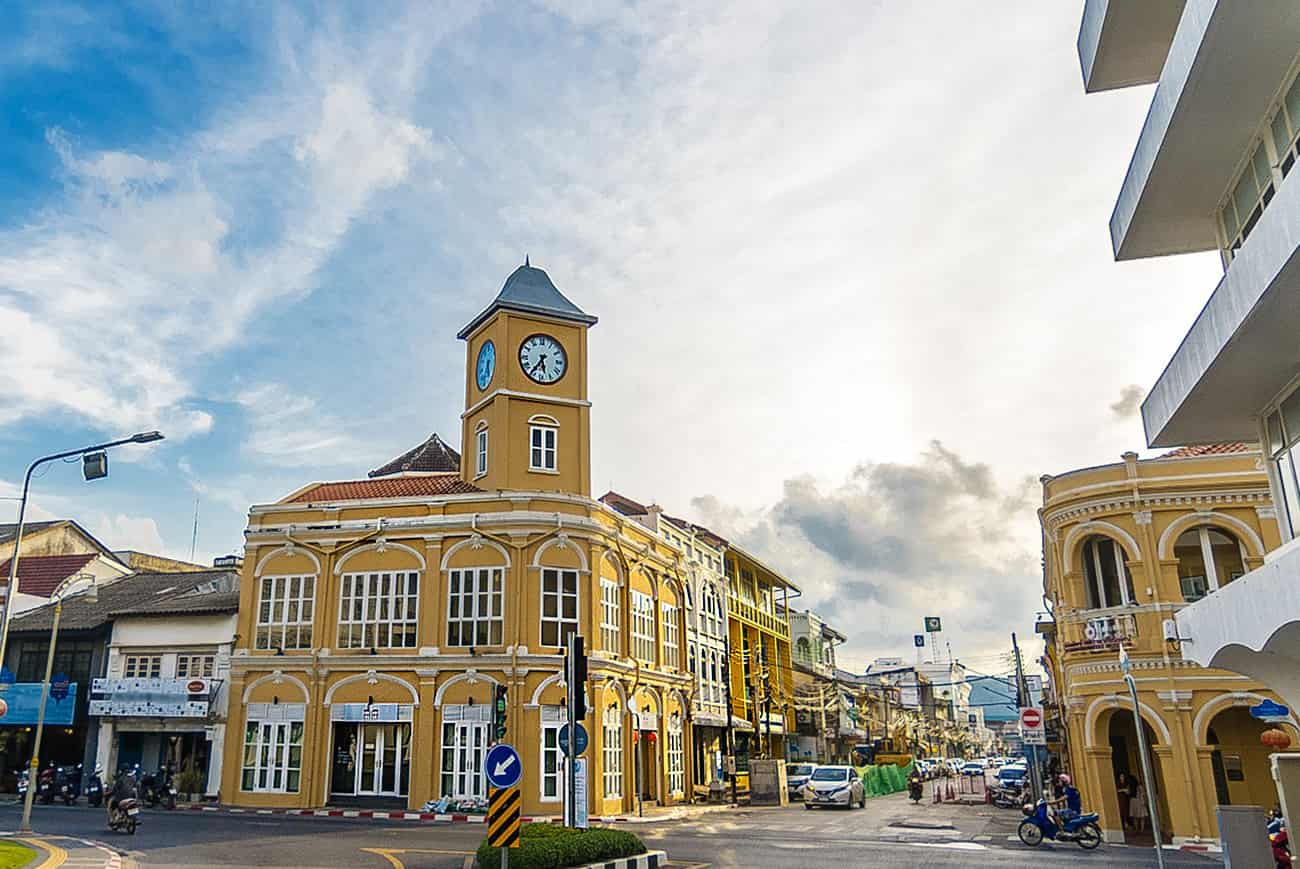
Credit : carrushome .com
Location: Phuket Province, Thailand
The Promthep Clock Tower is a colonial Sino-Portuguese style building that is under the ownership of the Phuket Police department. It has a police cap-shaped roof that was traditional. Watches were an expensive commodity in the early 1900s and not everyone could afford one. This is why people depended on clock towers to tell the time.
However, at the time of the construction of this tower, they had no funds left to install the clock. The space for the clock on the tower remained vacant for nearly 40 more years after its construction. A clock was purchased from Penang around this time but the boat sank and the clock never made it to Phuket. The tower finally got a clock in 1976 through the donation of the Phuket Lion’s Club.
Wat Tham Sua
(วัดถ้ำเสือ)
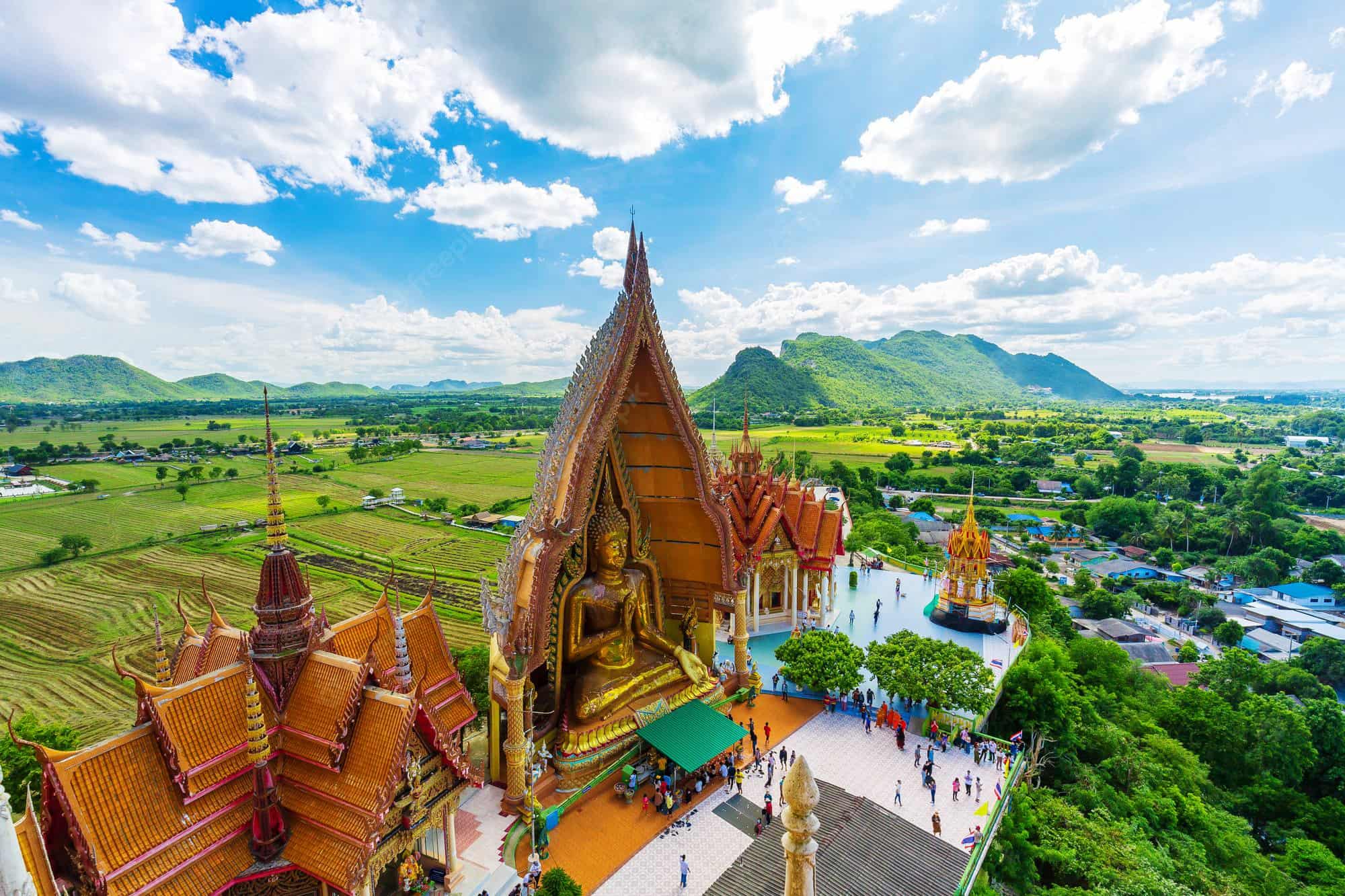
Credit : freepik
































